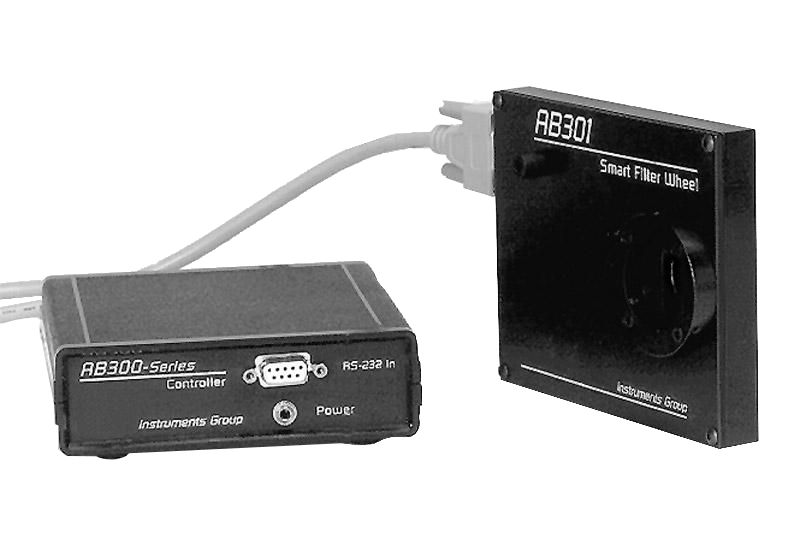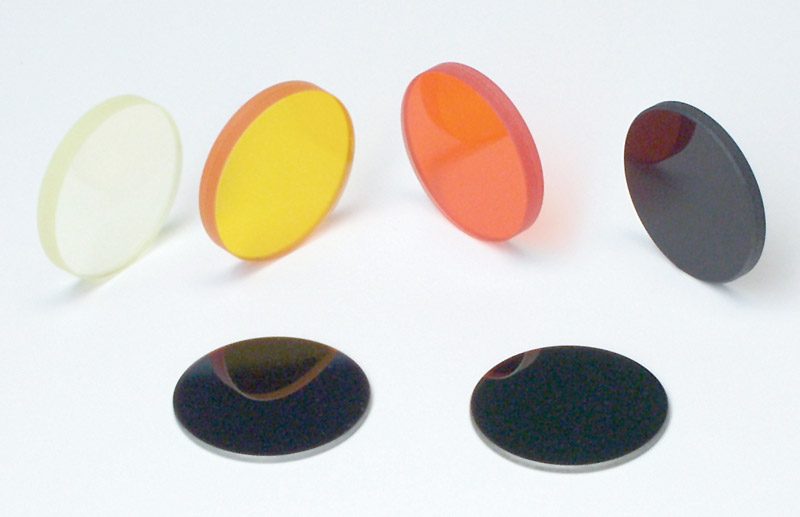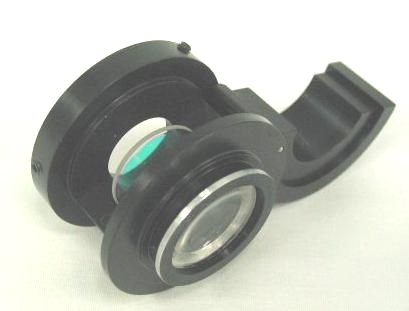Filter Wheels
Technology
When used in conjunction with appropriate detectors, filters form basic wavelength-selective detection systems. A filter spectrometer has the advantages of simplicity, high signal-to-noise ratio, low cost, and high throughput. A rotatable filter wheel allows multiple filters to be mounted and sequentially selected into the light path.

Operation
The combination of filters in the light path, that have characteristic transmission curves, generates variable pass-bands. When equipped with stepping motors and computer interfaces, the filter wheels can be automated to perform programmed sequences. Applications of filter wheels have been found in atomic spectrometry, environmental monitoring, illuminators, laser spectroscopy, and so on.
Definitions
Center
|
The arithmetic mean of the pass-band expressed in nanometers. |
%
|
The amount of power received by the detector compared to the total power available. The traditional formula is %T = I/I0 x (100), where I0, is the incident power and I is the transmitted power. |
Half Bandwith |
The width of the pass-band in nanometers at the half-power points of the pass-band. It is often expressed as the full width at half maximum (FWHM) |
Out of Band
|
The amount of energy, outside the filter pass-band, reaches the detector. It is often expressed as an absolute level, such as 10-4, meaning there are no transmission peaks outside the pass-band exceeding 0.0001 T or 0.01%T. The rejection range in nanometers must accompany this specification. |
Bandpass Shape |
Pass band shapes can vary from triangular to nearly square. The number of cavities involves determines the overall shape. |



